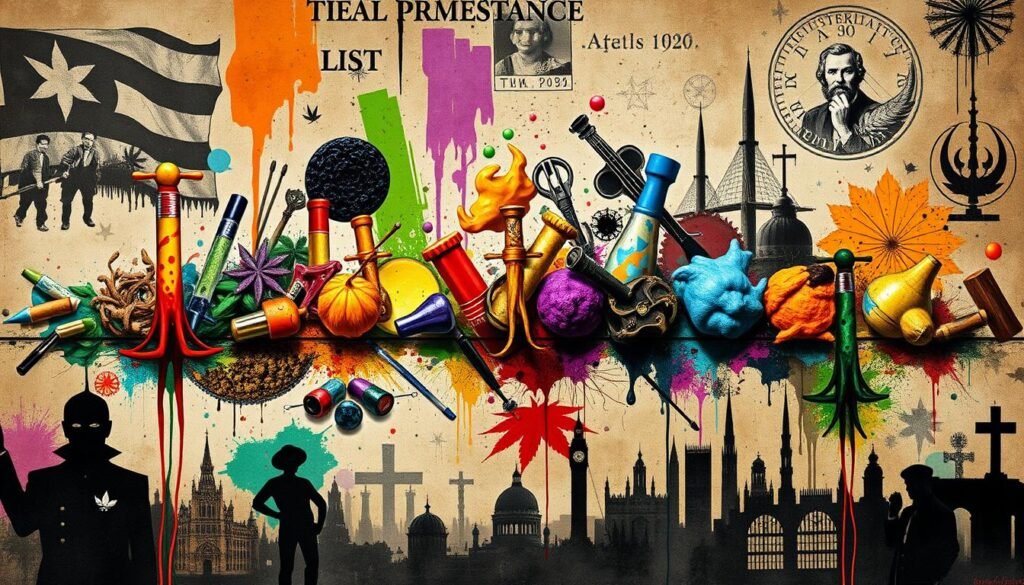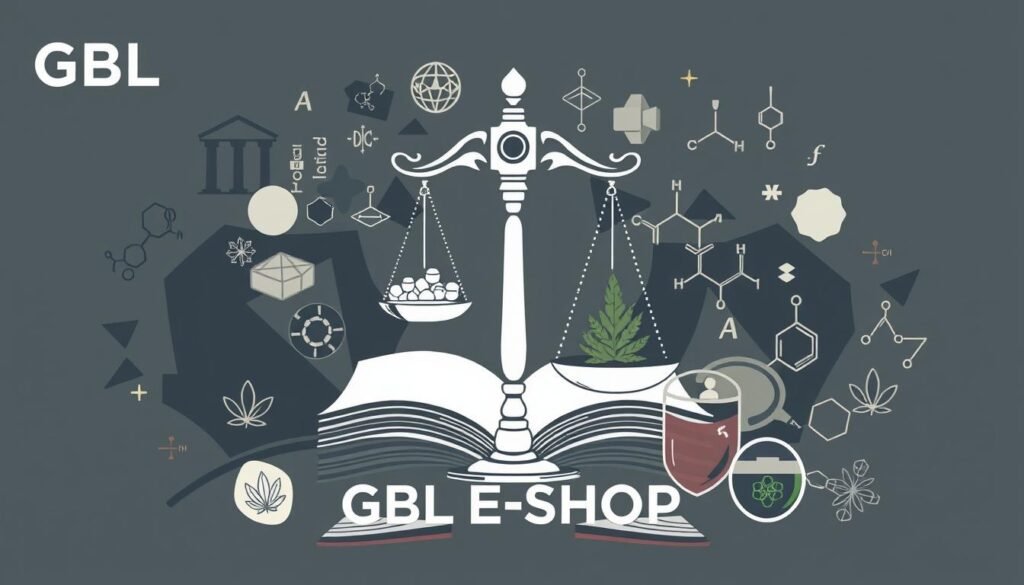Surprising statistic: In 2020, over 275 million people worldwide took part in illegal drugs part. This is an increase of 22% compared to 2010, which shows how important it is to report on G Drug and illegal substances.
"G Drug" refers to various drugs that are illegal in Germany. These include cocaine, heroin, methamphetamine, cannabis and synthetic drugs such as MDMA and LSD. The consumption of these substances can cause serious health and social problems. Therefore, their trade and consumption are punishable by law.

Key findings
- The consumption of illegal drugs has increased significantly worldwide.
- G Drug is a generic term for various illegal psychoactive substances.
- Possession of and trade in these substances is a punishable offense in Germany and other countries.
- The consumption of G Drug can have serious health and social consequences.
- A comprehensive examination of the topic is therefore urgently required.
What is meant by G drug and its mode of action
G Drugs, also known as Psychedelicsare illegal substances. They change our perception and our consciousness. These drugs affect the brain and can influence our mood and way of thinking.
Chemical composition and properties
LSD, psilocybin and MDMA are examples of G drugs. Their chemical structure makes them psychoactive. They affect certain brain processes and change our perception and way of thinking.
Physiological effects on the body
- Increased blood pressure and heart rate
- Pupil dilation
- Sweating and trembling
- Nausea and vomiting
- Loss of appetite
Psychological effects and risks
The use of G drugs can cause hallucinations and anxiety. The risk of negative effects is particularly high for people with mental health problems.
| Substance | Known effects | Possible risks |
|---|---|---|
| LSD | Intensification of sensory perception, euphoria, altered perception of time | Anxiety states, panic attacks, psychoses |
| Psilocybin | Hallucinations, changes in consciousness, increased compassion | Overexcitation, anxiety, confusion |
| MDMA | Increased empathy, euphoria, increased energy levels | Dehydration, overexcitation, anxiety |
The use of G drugs carries major health risks. It is important to know the dangers and side effects before trying them.
History and development of illegal substances
The use of psychoactive substances is as old as mankind itself. In ancient times, cultures used ethnobotany and traditional medicinal herbs for spiritual purposes. With industrialization came new psychoactive substances which are often misused.
The use of illegal drugs has grown considerably in recent decades. In the past, people used natural substances such as opium. But synthetic drugs such as amphetamines are gaining in importance. Consumers are constantly finding new ways to obtain these substances.
- From cultural significance to drug abuse
- The development of synthetic drugs in the modern age
- New trends and the race with legislation
"The history of drug use shows how the use of psychoactive substances has changed over time - from traditional use to problematic abuse."

Opium and cocaine were originally used for medicinal purposes. But they developed into drugs with a criminal element. Consumers and legislation are in a constant race.
Legal aspects and classification of narcotics
In Germany, the Narcotics Act (BtMG) regulates the use of illegal drugs. This also includes the "G drug". The law determines which substances are considered Narcoticsl apply and what penalties there are.
Current legislation in Germany
The BtMG prohibits the possession, sale and smuggling of narcotics. The penalties depend on the type and quantity. You can be fined or lose up to 15 years' imprisonment.
Consumption itself is not a criminal offense. But the acquisition and possession may be punishable.
International legal situation
Worldwide, agreements such as the Single Convention on Narcotics handling. Most countries have similar laws. These laws are intended to illegal drug trafficking stop.
Prosecution and consequences
- Possession of Narcotics can cost up to 5 years of freedom.
- Trafficking and smuggling often bring 5 to 15 years of freedom.
- Large quantities and organized groups are subject to even higher penalties.
- In addition, there are fines, disqualifications from driving, bans from working and Withdrawal of custody.
The fight against Drug-related crime is important in the German Drug policy. Prosecution is intended to deter and illegal drug trafficking stop.

| Criminal offense | Possible penalties |
|---|---|
| Possession of narcotics | Up to 5 years imprisonment |
| Trafficking and smuggling of drugs | 5 to 15 years imprisonment |
| Organized drug trafficking | High prison sentences |
Distribution and consumption patterns in society
Unfortunately, the use of drugs is widespread in Germany. Studies show that over 10% of the population illegal drugs have used. Young adults between the ages of 18 and 25 are particularly affected.
There are many reasons for the Drug use. Stress, boredom or pressure are often the causes. Socio-economic background also plays a role. People with a lower income and level of education often turn to illegal substances.
- More than 10% of Germans have already illegal drugs consumed
- Young adults are particularly affected
- Psychological factors and socio-economic circumstances promote the Drug use
"The use of illegal drugs has unfortunately become a widespread phenomenon in our society. We urgently need to find ways to counteract this."
In order to Drug use we need prevention and awareness-raising measures. This is the only way we can tackle the causes and help people to lead a life free from addiction.
Health risks and long-term consequences
The use of G drugs can entail serious health risks and long-term consequences. Both physical and psychological dependence play a major role. Drug addicts often also have to contend with major social problems.
Physical dependence
Regular use of G drugs leads to strong physical dependence. The body needs the drug to function normally. Without it, those affected experience withdrawal symptoms such as tremors and nausea.
Psychological dependence
Many users also develop a psychological dependency. They feel helpless without the drug. This can lead to depression and personality changes.
Social impact
The use of G drugs often has a major impact on the social environment. Families break up, friendships are lost and job losses are common. Many come into conflict with the law. Social isolation and the fall into the Drug addiction make recovery more difficult.
| Health risks | Long-term physical consequences | Long-term psychological consequences |
|---|---|---|
| Overdose | Organ damage | Personality changes |
| Withdrawal symptoms | Infectious diseases | Depression |
| Damage to the nervous system | Cardiovascular problems | Anxiety disorders |
The effects of Drug use on the body and psyche can be very serious. They make the path to Rehabilitation. It is therefore important to seek help at an early stage and to Withdrawal professionally.

Preventive measures and educational work
Prevention measures and educational work are important to combat the use of G drugs. Through addiction prevention and drug education we make people aware of the risks. In this way, we also help vulnerable groups.
To combat drug use combating drugs important. Schools offer prevention programs to inform young people. Campaigns are also useful to raise awareness.
- Improving education and prevention in schools
- Target group-specific awareness campaigns in the media
- Promotion of counseling and support services for people at risk
- Strengthening cooperation between authorities, organizations and experts
We need to combine prevention, education and assistance. In this way, we can reduce the use of G drugs in the long term. And we promote a healthier society.
| Preventive measure | Target group | Expected effect |
|---|---|---|
| School projects for Drug education | Pupils and young people | Prevention of initial consumption |
| Public information campaigns | General population | Raising awareness of the problem |
| Expansion of advisory services | Consumers and relatives | Promotion of exit and resocialization |
Through targeted measures, we can combat the use of G drugs. In this way, we offer people a healthier and safer environment.

"Prevention is the key to success in the fight against drug use. Only through a comprehensive approach can we protect society from the dangers in the long term."
Therapy and treatment options
There are many ways to deal with drug addiction. You can be treated as an outpatient or inpatient. The decision depends on the severity of the addiction and personal circumstances.
Outpatient forms of therapy
Outpatient therapies make it possible not to interrupt everyday life. Addiction counseling centers offer psychological help and group therapies. Psychotropic drugs help to withdrawal to facilitate.
Inpatient treatment
Stationary rehabilitation takes place in specialized facilities. There you can concentrate fully on your recovery. You receive comprehensive care, including psychotherapeutic services.
Aftercare and rehabilitation
Aftercare is important to prevent relapses. Treatment is followed by aftercare programs. These help to implement what has been learned in everyday life.
"Returning to a life free of addiction is a lifelong process that requires professional help and support."
Current trends and new psychoactive substances
There are always new developments in the world of illegal substances. Designer drugs" and "synthetic drugs" in particular have become a major problem. They are often sold as "legal highs" because they are not in the Narcotics Act stand.
These new drugs are very diverse and difficult to control. They can have unpredictable effects and are very dangerous to health. Their rapid emergence and change requires constant adjustments to laws and the healthcare system.
| New psychoactive substance | Chemical name | Possible effects |
|---|---|---|
| Synthetic cannabinoid | JWH-018 | Hallucinations, anxiety, palpitations |
| Legal stimulant | Ethyl phenidate | Euphoria, increased concentration, risk of addiction |
| Designer amphetamine | 4-MMC (mephedrone) | Intoxication, aggression, heart problems |
The development of new psychoactive substances is very rapid. This poses major challenges for legislators, law enforcement agencies and health experts. We need to find new ways to respond to these trends.
"These new substances are not only a threat to health, but also to public order. We must do everything we can to curb their spread."
Role of drug policy and prevention
A comprehensive strategy is needed to combat drug abuse. In Germany, the federal government is focusing on national and international measures. The aim is to restrict the illegal trade and consumption of drugs.
National strategies
In Germany, the focus is on Drug policy on the fight against G-drugs. There are increased controls at the borders and the dismantling of drug cartels. Law enforcement is also being strengthened.
There are also more prevention and treatment services. These are designed to help people with addiction problems.
International cooperation
Drug trafficking is often cross-border. That is why international cooperation important. Germany works closely with European and Latin American countries.
Joint investigations and the exchange of information are important. That's how they want to protect the G-Drug smuggling and consumption worldwide.
FAQ
What are the main ingredients of a G drug?
G drugs often consist of chemicals such as amphetamines or opioids. Sometimes they are also synthetic cannabinoids. The exact ingredients are often unknown.
How do G drugs affect the human body?
G drugs can have different effects. Some increase energy, others provide calm. They influence nerves and metabolism. This can lead to feelings of happiness or calm, but also to risks such as addiction.
How has the use of G drugs developed historically?
People have been using drugs for centuries, often for spiritual or medicinal purposes. But abuse has changed. This has led to stricter laws.
What are the legal consequences of possessing or trafficking G drugs?
In Germany, possession and trafficking in illegal drugs is a punishable offense. The penalties can be prison sentences or fines. The laws are set out in the Narcotics Act defined.
How widespread is the use of G drugs in society?
Many people use illegal substances, especially in certain age groups. The exact figures vary. But abuse is a major problem.
What are the health risks of G drugs?
G drugs can lead to addiction. There are risks such as overdose and damage to the body. In the long term, they can have a major impact on life.
What preventive measures are there against drug use?
There is education, schools and counseling. Early detection and international cooperation are important. The aim is to reduce abuse.
What treatment options are there for drug addicts?
There is counseling and therapy, also in hospitals. The aim is to restore health. The aim is to enable people to lead a drug-free life.
How do politicians and authorities deal with new psychoactive substances?
New drugs pose major challenges. Laws must adapt. International cooperation is necessary to stop the trade.
What role does drug policy play in preventing and combating drug use?
Policymakers use various methods, such as demand reduction. International cooperation is also important. The aim is to develop effective prevention strategies.


